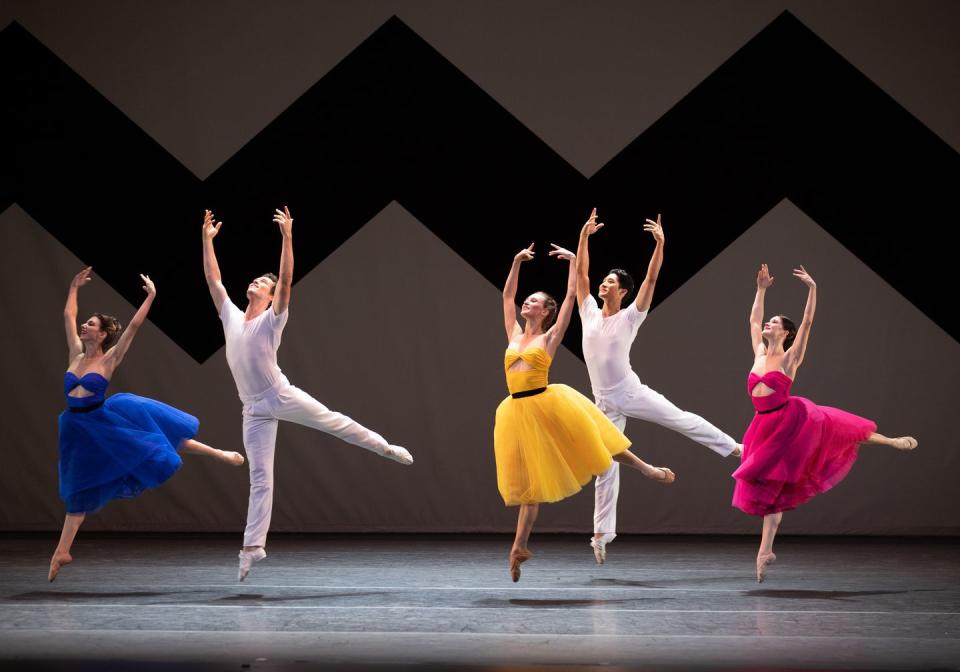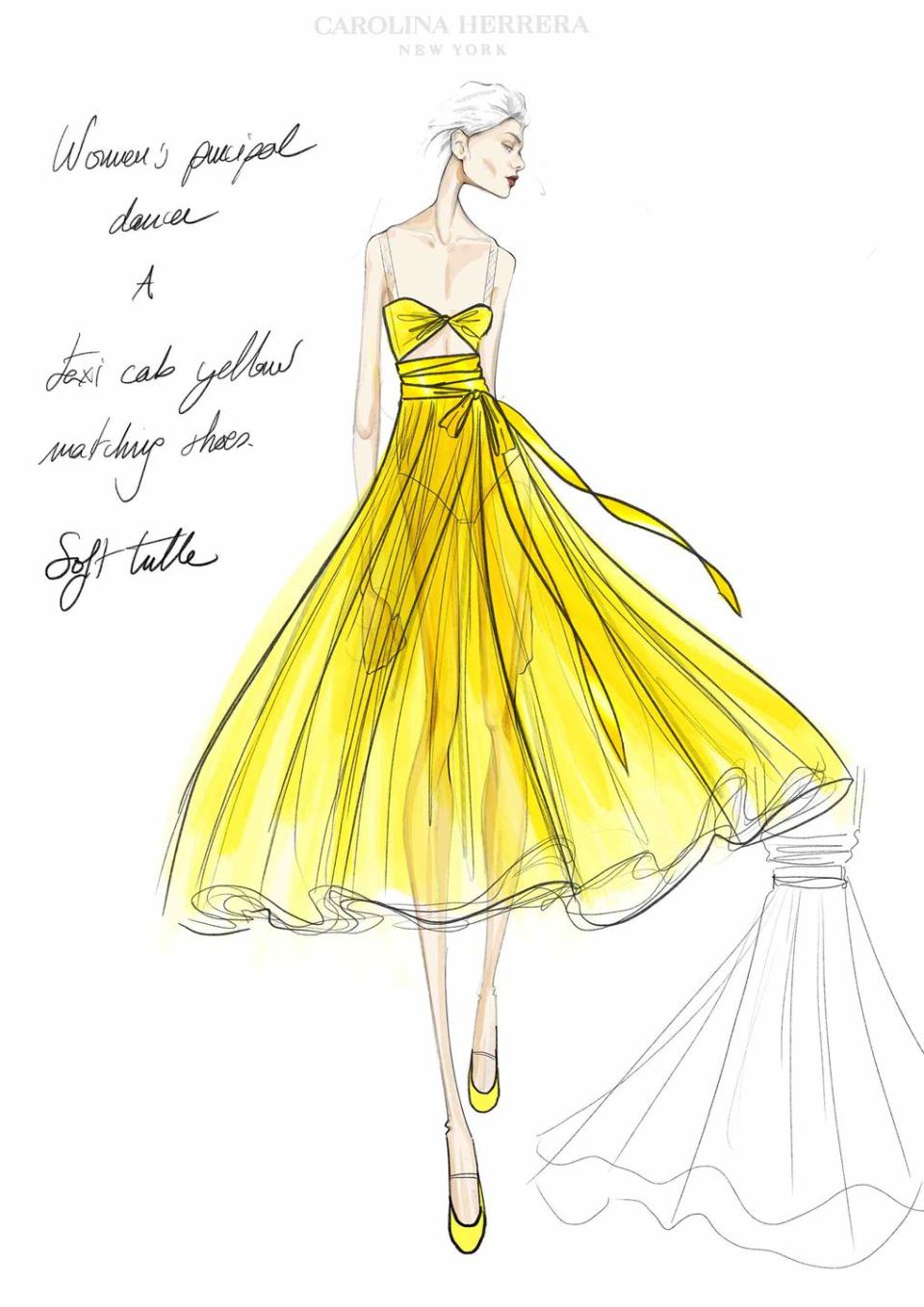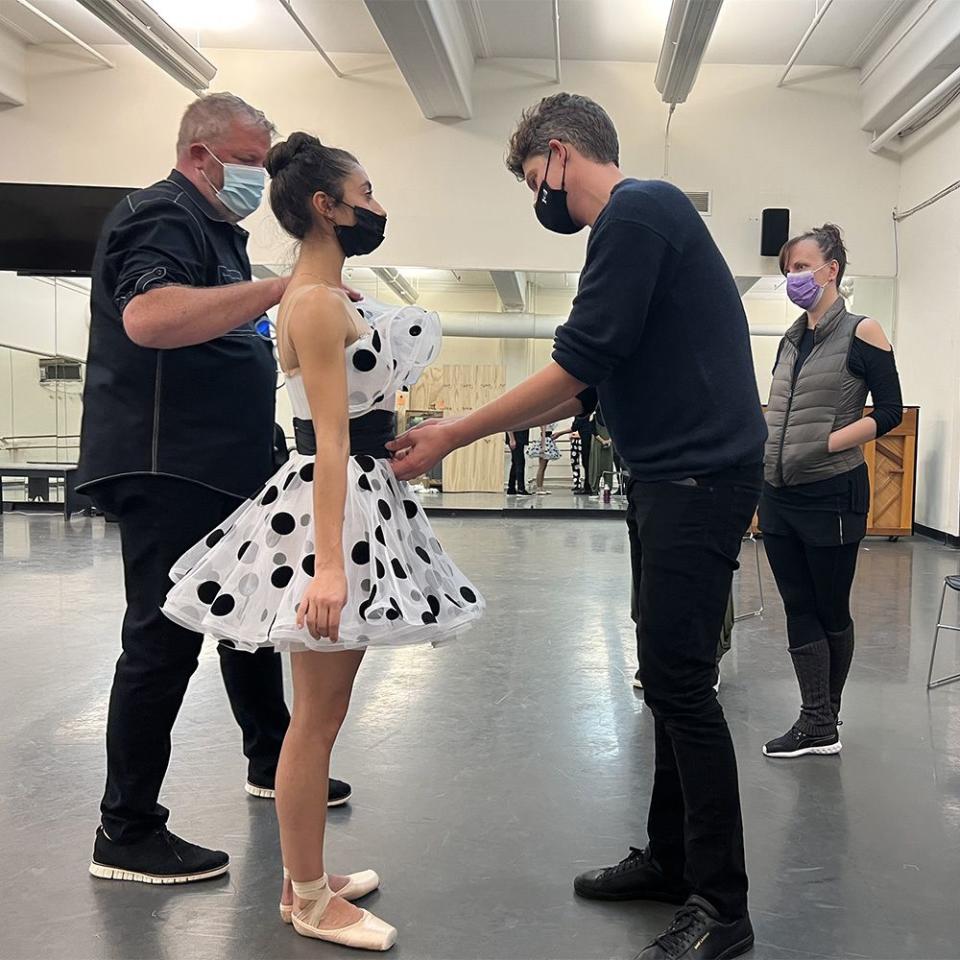Carolina Herrera’s Wes Gordon Plays Costume Designer for American Ballet Theatre’s Fall Gala

“When they zig, I zag,” Tony Bennett wrote in his 2012 memoir Life Is a Gift: The Zen of Bennett, offering an important lesson on how to elegantly pivot. Tonight, after nearly 18 months away from Lincoln Center dancing at kitchen counters and in quarantined ballet bubbles, the members of American Ballet Theatre (ABT) will bring the legendary singer’s prescient words to life with the world premiere of Jessica Lang’s ZigZag at the company’s Fall Gala. The ballet is set to 11 Bennett standards including “I Left My Heart in San Francisco,” “Smile,” and “What the World Needs Now,” as well as Cole Porter’s “It’s De-Lovely” performed by Bennett and Lady Gaga. It features backdrops highlighting Bennett’s own artwork of the city’s skyline designed by Moulin Rouge set designer Derek McLane, and gorgeous costumes in polka dots and bold colors by Carolina Herrera creative director Wes Gordon. Ahead of the show, BAZAAR.com speaks with Gordon about his process and inspirations.
How did this collaboration with ABT and choreographer Jessica Lang come about?
We started talking a while back in the midst of COVID about doing this together, and it kept getting postponed. But now it’s actually happening, and it’s here and it’s real. It’s a remarkable journey that the dancers have been on to get to this point—everyone in the dance and theater world had a particularly challenging lockdown. There’s something really beautiful about the resilience of this piece, that it’s now happening. I’m super proud of all of them and so honored and grateful that we get it to be a part of it.
And it’s such a New York piece, too, right?
It’s such a New York piece. It’s really modern and cool. It’s an homage to Tony Bennett. There’s just a great energy to it. It’s fun. It’s fresh.

Tell us a little more about what your collaborative process looked like.
I think the key to a great collaboration is humility. And I’ll be the first to say that I don’t have tremendous experience designing costumes. The requirements and needs of a piece of clothing for a ballet dancer to wear while performing multiple times onstage are very different than the requirements of the clothes that I’ve produced for Herrera. So I really went into this very much excited to learn—from Jessica and from the dancers. And in the same sense, she came to us very excited and open to our ideas and suggestions aesthetically.
So to start, did you listen to the music? Had Jessica already figured out some of the movements she’d use?
When you talk to any artist, the passion is so visible, and Jessica is no exception. She can really see and visualize these pieces in a way that was new for me. She saw the set, and it was based off of Tony Bennett, some ink drawings he does. She heard the music. She knew the specific dancers that she was designing each part for.
That ability to think in choreography and to think as visual choreographed expressions is something that I have no experience in. I can talk about a run of show. I can talk about a shoot. But when it comes to talking about different ensembles, and then what’s happening here and this transition there, I was like, “Time-out, back up, explain to me what you mean.” So she made me a chart of, “Okay, when I say this, these people are onstage.”
I imagine it was extra challenging to learn a new visual language when you couldn’t even be together in the same room.
It was actually just last week that Jessica and I had our first in-person meeting! This has really been such a long journey over Zoom, text message, and email. She showed me these specific reference sketches or lighting ideas, and I started getting in because it’s the same visual building blocks that I use for planning a show or a shoot—just with different players and different vocabulary. It’s storytelling through a different medium.
What were your inspirations for the costumes?
If I’m approaching a collaboration, it’s always about what are we bringing to the table that speaks to [them] from the world of Herrera. Here, that’s what differentiates it from regular dancewear. And two of our main brand codes, polka dots and color, happened to work seamlessly with this piece and the Tony Bennett music and the whole aesthetic that Jessica was already envisioning. So we were very much aligned from the beginning when I came to her and said, “Let’s just play with black and white, and then a burst of bold color.”

How do you settle on your colors? Obviously, the yellow is the New York taxi cab.
I knew I only had three for the leads, so I really wanted to make them count. The yellow had to be just the right shade of taxi cab yellow. Beautiful cobalt blue. And then, just to make it something that feels a little fresher, pink. That hot pink, I think, marries so well with the other two. I think that’s a beautiful trio. They’re all kind of the same saturation and tonality.
I took off all the wrapping ribbons from the waist. And instead, I just did a simple black wide ribbon cinching the waist, adding that unity throughout. Some people are afraid of the idea of black with yellow, but it’s actually very Herrera; early Herrera fragrance boxes were black and yellow polka dots. I think there’s something fabulous and bold about a yellow-and-black combination. So all three looks now are married together with this black cinched waist, and then a black band in the hair as well.
What were your references for the black and white men's costumes?
The references that I kept coming back to were almost Fosse-esque. It almost looks like a rehearsal wear. I found a great old candid photo of Mikhail Baryshnikov rehearsing, and it’s kind of just like a great T-shirt with kind of a stretched-out neck and some pleated pants that kind of taper at the bottom. It doesn’t feel gimmicky. It doesn’t feel like it’s trying too hard. They just look cool and sexy and sporty and amazing.

What are some of the lessons you learned about what works for a runway that doesn’t translate so well for the stage?
If I put a bow at the waist, actually that could be problematic, because if a dancer is picking up another dancer, the hand can get caught. Hem length on pants is another. Dancers are very much aware of the line of their leg and wanting to extend that line as long as possible. If you cut a pant a little short—which could be my instinct in a fitting, to show a little ankle—actually you’re breaking that line. So there’s just a lot of things like this that were such beautiful pieces of information exchanges. I learned a lot from the fittings at ABT’s studio down by Union Square, where the dancers have tried the pieces on. We pin it, and then they dance and move in it.
I bet that’s quite different than a fashion fitting.
I mean, I try to think about how my clothes are going to exist in the world and is she going to a party in this. But rarely am I thinking is she jumping and pirouetting and being picked up! So how can we translate the aesthetic of what we do in the collection to that? And I think the polka-dot one, for example, with the exuberant ruffles and the asymmetry and the big Herrera polka dots, does that in a way that still allows the dancer to do what she needs to do.
Jessica and I both felt strongly that we didn’t want the costumes to get too many layers of tulle and get bulked up and start feeling heavy. This is a modern piece, and it’s based off of modern music. This is not Swan Lake, this is Tony Bennett. When the girls are dancing, there should just kind of be this effortless ease to it. The fabric should be able to twist and turn and feel light.
You Might Also Like


